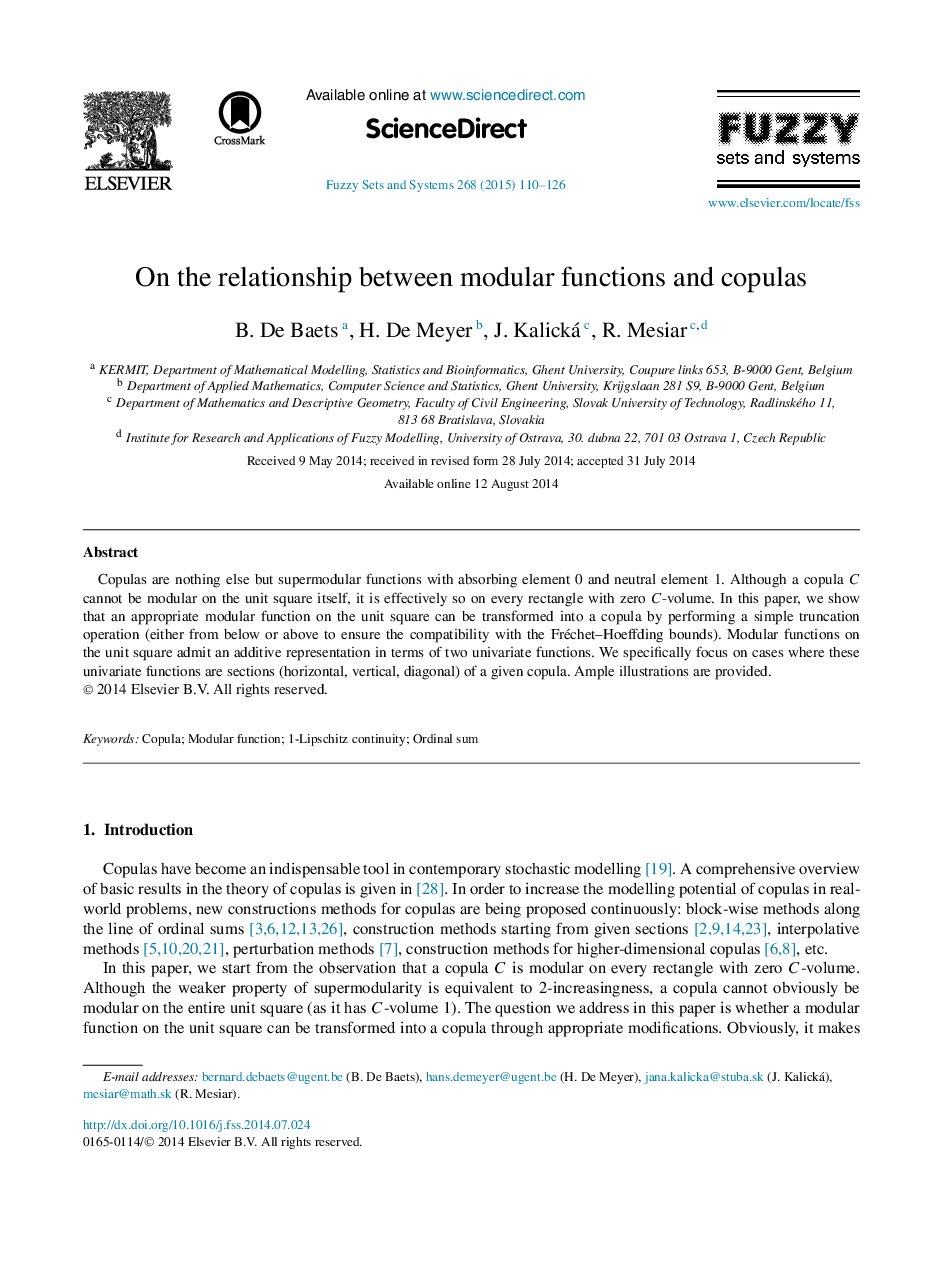| Article ID | Journal | Published Year | Pages | File Type |
|---|---|---|---|---|
| 389445 | Fuzzy Sets and Systems | 2015 | 17 Pages |
Abstract
Copulas are nothing else but supermodular functions with absorbing element 0 and neutral element 1. Although a copula C cannot be modular on the unit square itself, it is effectively so on every rectangle with zero C-volume. In this paper, we show that an appropriate modular function on the unit square can be transformed into a copula by performing a simple truncation operation (either from below or above to ensure the compatibility with the Fréchet–Hoeffding bounds). Modular functions on the unit square admit an additive representation in terms of two univariate functions. We specifically focus on cases where these univariate functions are sections (horizontal, vertical, diagonal) of a given copula. Ample illustrations are provided.
Keywords
Related Topics
Physical Sciences and Engineering
Computer Science
Artificial Intelligence
Authors
B. De Baets, H. De Meyer, J. Kalická, R. Mesiar,
